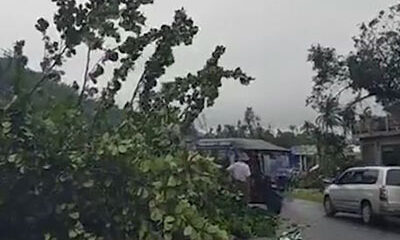Environment, Disasters & Accidents
“မြန်မာနိုင်ငံက ငလျင်က ကျွန်မတို့ရဲ့ ထမင်းအိုးကိုခွဲခဲ့တယ်။ ဒါပေမဲ့ ဆက်ပြီးတော့ ကြိုးစားရုန်းကန်ရမှာပေါ့”
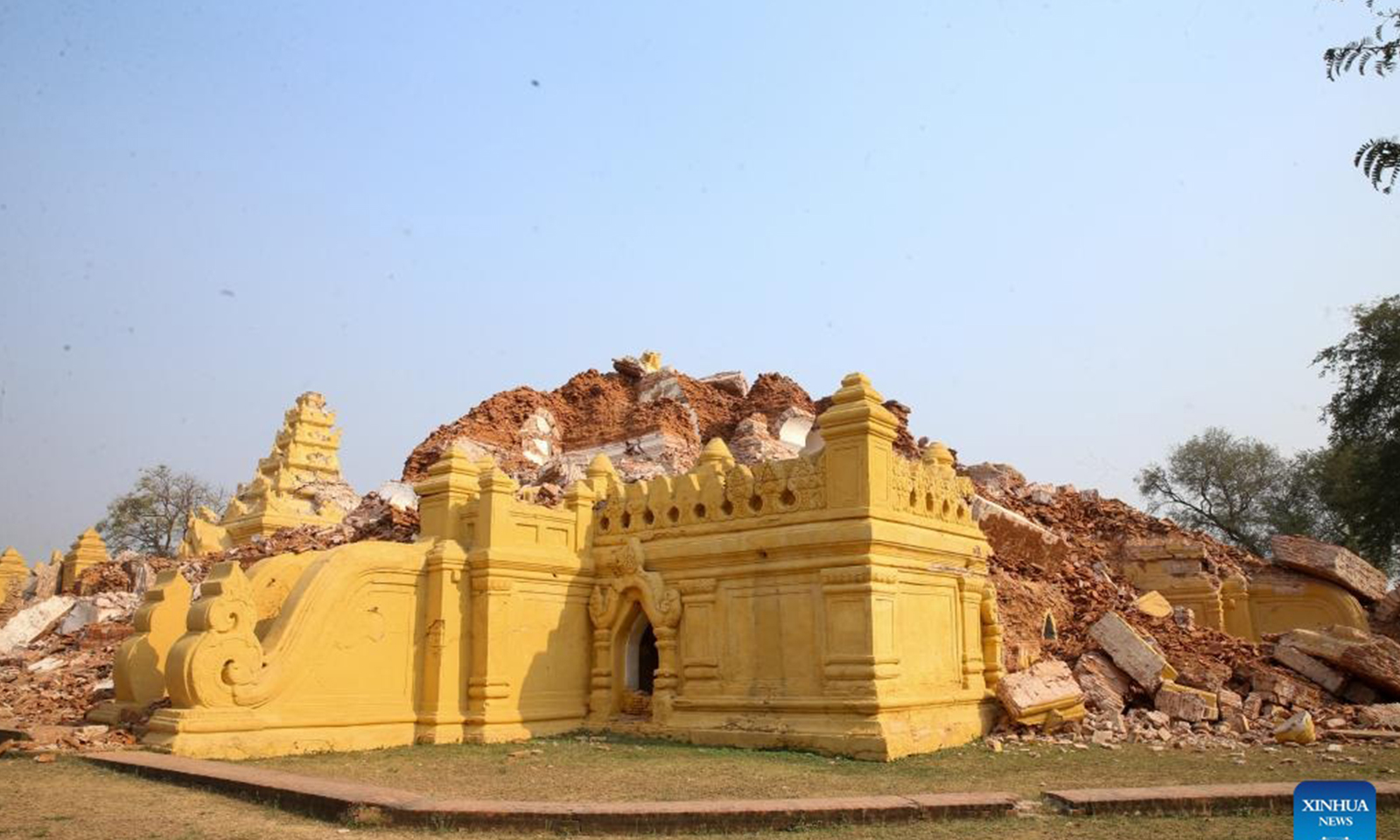
အင်းဝ၊ မြန်မာ၊ ဧပြီ ၆ ရက် (ဆင်ဟွာ)
မထက်ထက်ဝင်းသည် တစ်ချိန်က အင်းဝ၏ သမိုင်းကြောင်းကြွယ်ဝမှု ဂုဏ်ယူဖွယ်ပြယုဂ်နှင့် ဒေသခံများအတွက် အသက်သွေးကြောဖြစ်ခဲ့သည့် မယ်နုအုတ်ကျောင်း၏ ပြိုကျနေသည့် အပျက်အစီးများရှေ့ မတ်တတ်ရပ်နေသည်။
ထိုသို့ဖြစ်စဉ်မှာ မယ်နုအုတ်ကျောင်း တစ်ခုတည်းတော့မဟုတ်ပေ။ မြန်မာနိုင်ငံ အလယ်ပိုင်း မန္တလေးတိုင်းဒေသကြီးတွင် မတ် ၂၈ ရက်က လှုပ်ခတ်ခဲ့သော အင်အား ၇.၉ မဂ္ဂနီကျုအဆင့်ရှိ ငလျင်ကြောင့် အင်းဝမြို့ရှိ ရှေးဟောင်းအဆောက်အအုံအားလုံးနီးပါး ပြိုကျခဲ့ရကာ အင်းဝမြို့မှာလည်း အပျက်အစီးများဖြင့် ကျန်ရစ်ခဲ့ပေသည်။
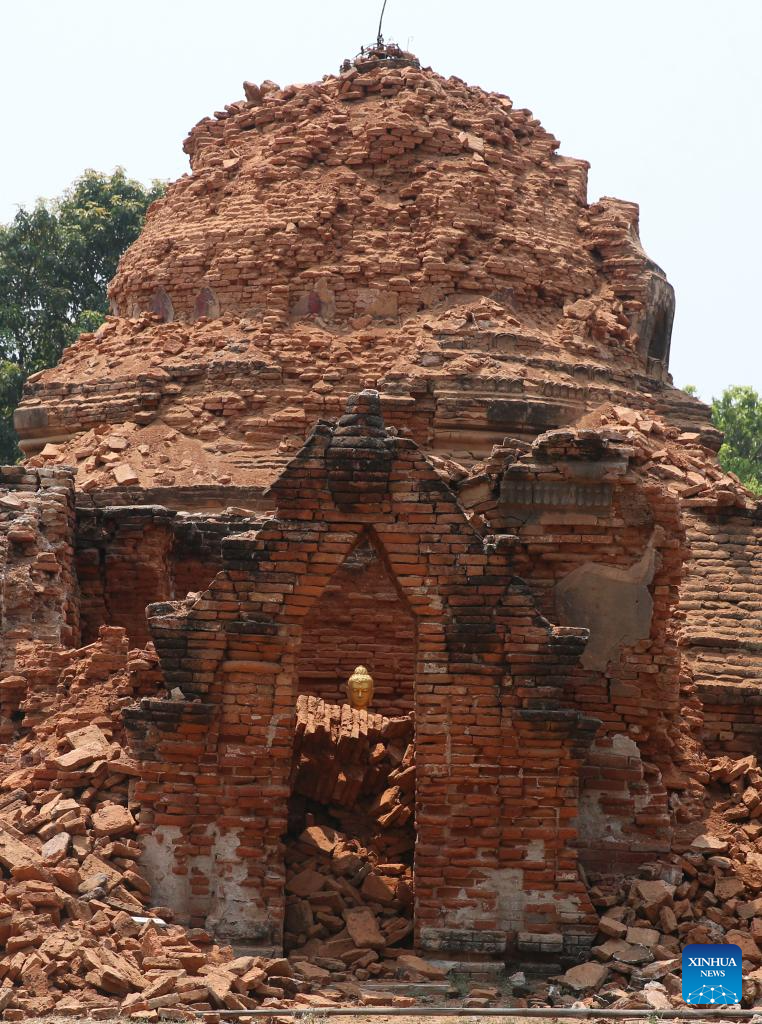
မြန်မာနိုင်ငံ အင်းဝရှေးဟောင်းမြို့ရှိ ပျက်စီးနေသော ဘုရားစေတီများကို ၂၀၂၅ ခုနှစ် ဧပြီ ၂ ရက်က တွေ့ရစဉ် (ဆင်ဟွာ)
နာမည်ကျော် အင်းဝမြို့သည် မန္တလေးတိုင်းဒေသကြီးတွင် တည်ရှိပြီး ၁၄ ရာစုမှ ၁၉ ရာစုအထိ မြန်မာနိုင်ငံ၏ရှေးဟောင်းမြို့တော် ဖြစ်ခဲ့ကာ ရှေးဟောင်းအဆောက်အအုံနှင့် ဘုရားစေတီပေါင်း ၉၆၀ ကျော် ရှိကြောင်း သိရသည်။
ရာစုနှစ်များကြာ သက်တမ်းရှိသော ဘုရားများမှတစ်လျှောက် ပန်းများရောင်းလျက် ခရီးသွားဧည့်သည်များကို လမ်းညွှန်ခြင်းလုပ်ကိုင်ရသည့်အစား မထက်ထက်ဝင်းသည် ယခုအခါ ပျက်စီးနေသောအုတ်ပုံများနှင့် ပြုတ်ကျနေသော ထောက်တိုင်များကို ငေးငိုင်ကြည့်ကာ သဘာဝဘေးအန္တရာယ်က အင်းဝမြို့၏ အမွေအနှစ်ကိုသာမက ၎င်း၏အသက်မွေးဝမ်းကျောင်းကိုပါ မည်ကဲ့သို့ သိမ်းကြုံးဖျက်ဆီးခဲ့ပုံကို ရှင်းပြခဲ့သည်။
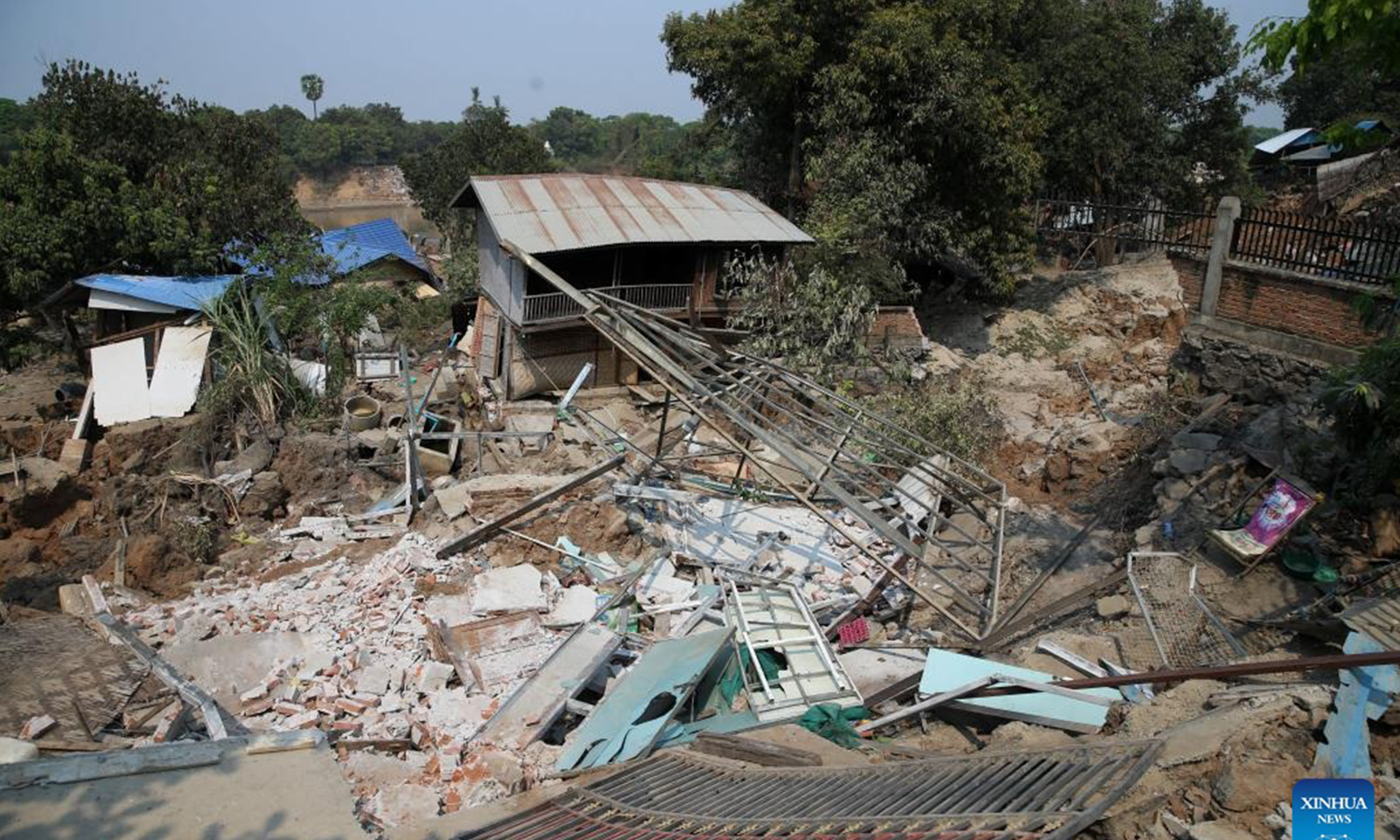
မြန်မာနိုင်ငံ အင်းဝရှေးဟောင်းမြို့ရှိ ပျက်စီးနေသော အဆောက်အအုံများကို ၂၀၂၅ ခုနှစ် ဧပြီ ၂ ရက်က တွေ့ရစဉ် (ဆင်ဟွာ)
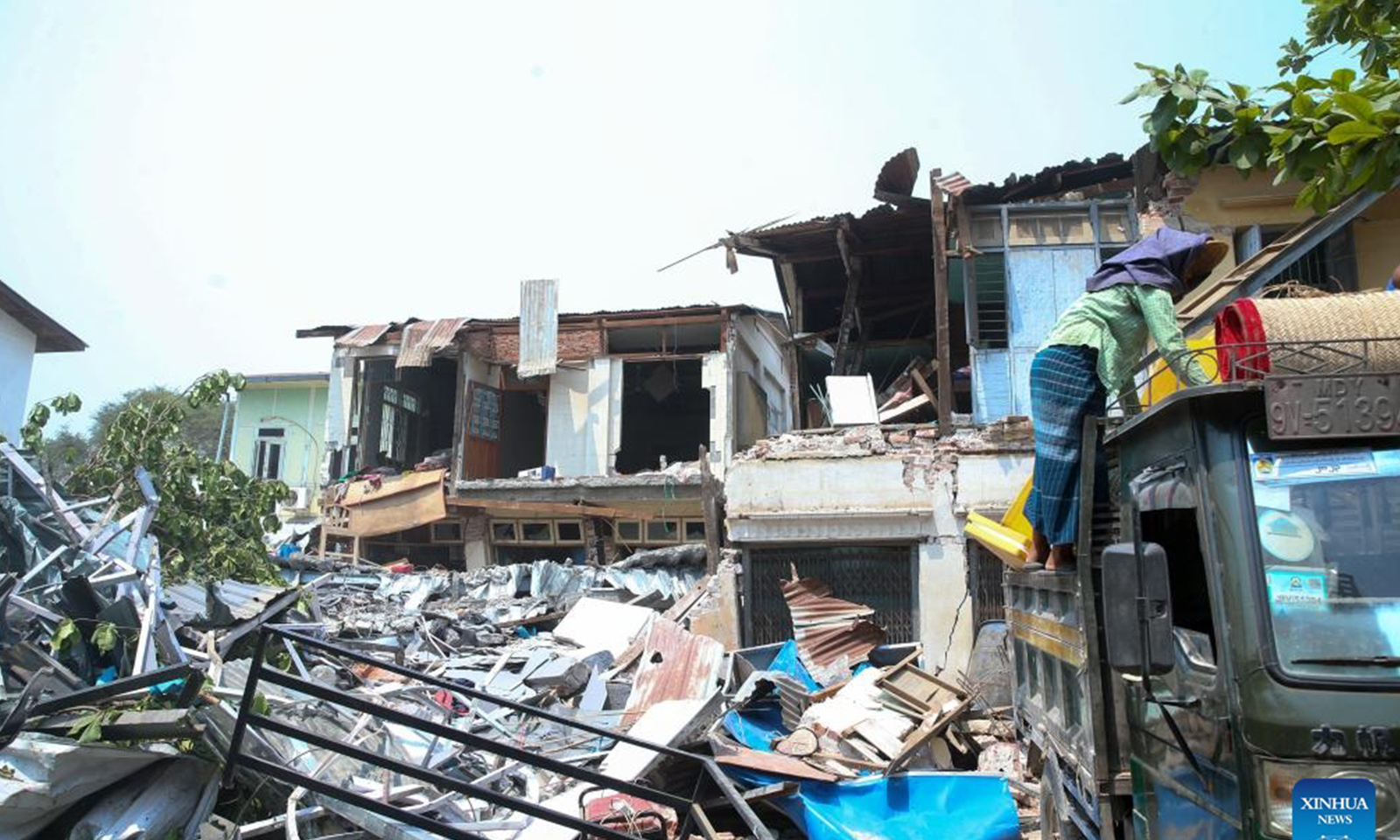
မြန်မာနိုင်ငံ အင်းဝရှေးဟောင်းမြို့ရှိ ပျက်စီးနေသော အဆောက်အအုံများကို ၂၀၂၅ ခုနှစ် ဧပြီ ၂ ရက်က တွေ့ရစဉ် (ဆင်ဟွာ)
“ဒီငလျင်က ကျွန်မတို့ရဲ့ ထမင်းအိုးကိုခွဲခဲ့တာ” ဟု အသက် ၂၂ နှစ်အရွယ် မထက်ထက်ဝင်းက ၎င်းတို့အသက်မွေးဝမ်းကျောင်းလုပ်ငန်း ပျောက်ဆုံးခဲ့ပုံကို ပြောပြခဲ့သည်။ “အုတ်ကျောင်းကြီးပြိုကျတုန်းက ကျွန်မတို့ထမင်းအိုးကွဲသွားတာ” ဟု ၎င်းက ဧပြီ ၃ ရက်၌ ပြောခဲ့သည်။
လွန်ခဲ့သောနှစ်ပေါင်းများစွာကတည်းက ၎င်းတို့မိသားစုသည် ယင်းနေရာ၌ ရှင်သန်ရပ်တည်နေခဲ့ခြင်းဖြစ်သည်။ ရှေးဟောင်းဘုန်းတော်ကြီးကျောင်းများနှင့် ဘုရားစေတီများသို့ ခရီးသွားဧည့်သည်များ လာရောက်ချိန်တွင် မထက်ထက်ဝင်းကဲ့သို့ ဒေသခံများက ပန်းများရောင်းခြင်း၊ ခရီးသွားဧည့်သည်များအား ဓာတ်ပုံရိုက်ပေးခြင်း၊ ရှေးဟောင်းဘုရားစေတီများအကြောင်းကို ဝေမျှပြောပြပေးခြင်းဖြင့် ပုံမှန်ဝင်ငွေများ ရရှိခဲ့သည်။ အလုပ်များသောနေ့ရက်များတွင် ၎င်းရေတွက်နိုင်သည်ထက် ဝင်ငွေပိုမိုရရှိခဲ့သည်ဟု မထက်ထက်ဝင်းက ဆိုသည်။
သို့ရာတွင် ငလျင်လှုပ်ခတ်ခဲ့မှုကြောင့် အရာရာမှာပြောင်းလဲသွားခဲ့ပေသည်။ မြေငလျင်အားပြင်းစွာ လှုပ်ခတ်ခဲ့ခြင်းဖြင့် ဘုန်းတော်ကြီးကျောင်းများ၊ ဘုရားစေတီများ၊ ရာစုနှစ်သက်တမ်းရှိသော အဆောက်အဦများ အပါအဝင် အင်းဝမြို့၏ ရှေးဟောင်းအထင်ကရနေရာများမှာ ပြိုကျပျက်စီးခဲ့ရသည်။
စနစ်တကျတည်ဆောက်ထားသော မယ်နုအုတ်ကျောင်းသည်လည်း ပြိုကျပျက်စီးခဲ့ရသည်။ နေအိမ်များ အက်ကွဲပွင့်ထွက်ခဲ့ပြီး လမ်းများမှာလည်း အက်ကွဲကြောင်းများ ဖြစ်ပေါ်ခဲ့သည်။
အင်းဝ၏ ဆုံးရှုံးမှုသည် ငွေကြေးပိုင်းဆုံးရှုံးမှုထက် ကျော်လွန်နေပေသည်။ ငလျင်ကြောင့် ရေပိုက်လိုင်းများ တစ်စစီပျက်စီးသွားသဖြင့် ရာနှင့်ချီရှိသော အိမ်ထောင်စုများအား သန့်ရှင်းသောရေရရှိရေး ပြတ်တောက်သွားခြင်းက အသက်ရှင်ကျန်ရစ်သူများအဖို့ နေ့စဉ်ရုန်းကန်ရသောအခက်အခဲပင်ဖြစ်သည်။
“အခု ကျွန်မတို့ ဧရာဝတီမြစ်ထဲကရေသွားသယ်ရတာ။ ဒါပေမဲ့ တချို့ မြစ်ကမ်းပါးတွေလည်း ပြိုကျကုန်တာဆိုတော့ အဲဒီကိုရောက်ဖို့တောင် တော်တော်လေးခက်ခဲတယ်” ဟု မထက်ထက်ဝင်းက ဆိုသည်။
ညအချိန်ရောက်ရှိပြန်လေတော့လည်း ကြောက်ရွံ့မှုက တစ်ဖန်ပေါ်လာပြန်လေသည်။ နေအိမ်များက မလုံခြုံတော့သလို လူအများစုမှာလည်း အပြင်ဘက်တွင် အိပ်စက်ကြရသည်။ နောက်ဆက်တွဲငလျင်များ လှုပ်ခတ်ချိန်တိုင်း ၎င်းတို့မှာအိပ်ရာမှလန့်နိုးလာခဲ့ပြီး ယင်းမှာ ခက်ခဲစွာကျော်ဖြတ်ခဲ့ရသော ရက်စက်လှသည့် သတိပေးခေါင်းလောင်းသံပင်ဖြစ်သည်။
အခက်အခဲများရှိနေဆဲကြားထဲမှ အသက်ရှင်သန်ရသည့် ကံကောင်းထောက်မမှုကိုလည်း ၎င်းက ထည့်သွင်းပြောကြားခဲ့သည်။ “တခြားနေရာတွေနဲ့ယှဉ်ရင်တော့ ကျွန်မတို့က အသက်ဘေးကလွတ်ကြတယ်။ ကျွန်မတို့ရပ်ကွက်ထဲမှာ ဘယ်သူမှမဆုံးပါးကြဘူး” ဟု ၎င်းက ဆိုသည်။
ပြိုကျပျက်စီးနေသည့် အဆောက်အအုံများအောက်မှ သေဆုံးသူများကို ဆွဲထုတ်ယူနေရသည့် အနီးဝန်းကျင်ရှိ စစ်ကိုင်း၊ တံတားဦးနှင့် မန္တလေးတို့နှင့် မတူညီဘဲ အင်းဝမြို့မှာမူ လူအများအပြားသေဆုံးမှုများ ကင်းဝေးခဲ့သည်။ သို့သော် အသက်ရှင်သန်ရေးအပြင် ဝမ်းရေးကလည်း ရှိနေပြန်သည်။
ခရီးသွားဧည့်သည်များလည်း မရှိ။ ဘုန်းတော်ကြီးကျောင်းများလည်း အပျက်အစီးပုံများဖြစ်သွားခဲ့သည်။ ခရီးသွားဧည့်သည်များမရှိပါက ဝင်ငွေလည်းရှိမည်မဟုတ်ပေ။
ခုနစ်စတုရန်းမိုင်ဧရိယာလွှမ်းခြုံမှုရှိသော အင်းဝမြို့သည် အဆောက်အဦနှင့် ဘုရားစေတီပုထိုး ၉၆၁ ဆူဖြင့် ကြွယ်ဝသော သမိုင်းကြောင်းရှိသည်။ ထို့ပြင် အင်းဝကို ယူနက်စကို ကမ္ဘာ့အမွေအနှစ်စာရင်း၌ ထည့်သွင်းနိုင်ရေးအတွက် ပြင်ဆင်ဆောင်ရွက်လျက်ရှိကြောင်း ဒေသတွင်းမီဒီယာများက သတင်းဖော်ပြထားသည်။
အဆိုပါ ရှေးဟောင်းအုတ်ကျောင်းတော်ကြီးက ကိုဗစ်-၁၉ရောဂါမတိုင်မီက ခရီးသွားဧည့်သည်ဦးရေ ၁,၀၀၀ ကျော်ကို ဆွဲဆောင်ထားနိုင်ခဲ့ပြီး ငလျင်မလှုပ်ခတ်မီက ခရီးသွားဧည့်သည်အရေအတွက် ရာနှင့်ချီ၍ရှိခဲ့သည်ဟု မထက်ထက်ဝင်းက ဆိုသည်။
တစ်ချိန်က သမိုင်းဝင်နေရာဖြစ်ခဲ့ပြီး ယခုအခါ အုတ်ကျိုးအုတ်ပဲ့ပုံဖြစ်နေသော ၎င်း၏မြို့လေးကို ငေးကြည့်လျက် မထက်ထက်ဝင်းမှာ အိပ်မက်များ တစ်စစီပြိုကျပျက်စီးခဲ့ရသည်။ ယင်းကျောင်းတော်ကြီးအား ပြန်လည်ထိန်းသိမ်းနိုင်ဦးမည်လားဆိုသည်ကိုမူ ၎င်းအနေဖြင့် မသိရှိနိုင်ဟု ၎င်းက ပြောခဲ့သည်။ထိုသို့ဆိုသည့်တိုင် ၎င်းအနေဖြင့် အရှုံးပေးရန်ကိုမူ ငြင်းဆိုလျက် “ကျွန်မတို့ကတော့ ဆက်ပြီးတော့ ကြိုးစားရုန်းကန်ရမှာပေါ့” ဟု ဆိုသည်။ (Xinhua)
……………………………………..
(English Version)
Feature: “Myanmar earthquake broke our pot of rice, but we have to keep struggling”
INWA, Myanmar, April 4 (Xinhua) — Htet Htet Win stands before the shattered remains of Me Nu Brick Monastery, once a proud symbol of Inwa’s rich history and a lifeline for its people.
But it’s not just Me Nu Brick Monastery. Nearly all of Inwa’s ancient structures collapsed in the March 28 7.9-magnitude earthquake, which hit central Myanmar’s Mandalay Region, leaving Inwa in ruins.
Also known as Ava and located in the Mandalay Region, Inwa was an ancient capital of Myanmar from the 14th to the 19th century, and is home to over 960 ancient buildings and pagodas.
Instead of selling flowers and guiding visitors through centuries-old temples, Htet Htet Win now gestures toward piles of broken bricks and fallen pillars, explaining how the disaster wiped out not only Inwa’s heritage but also her livelihood.
“The earthquake broke our pot of rice,” said the 22-year-old, using a Myanmar proverb about lost livelihoods. “The monastery fed us. When it collapsed, I felt like we no longer had our pot of rice,” she said on Wednesday.
For years, she and her family thrived here. Tourists came for the ancient monasteries and pagodas, and locals like her earned a steady income through selling flowers, taking pictures for visitors, and sharing stories of the ancient pagodas. On busy days, she made more money than she could count, she said.
But the earthquake changed everything. The ground roared, and Inwa’s ancient landmarks, including monasteries, stupas, centuries-old structures, crumbled.
Brick by brick, Me Nu Monastery collapsed. Homes cracked open. Roads split.
Yet Inwa’s loss is more than financial. It is a daily struggle for survival as the earthquake shattered water pipelines, cutting off access to clean water for hundreds of families.
“We now have to collect water from the Ayeyarwady River,” Htet Htet Win said. “But some riverbanks have collapsed, making it even harder to reach.”
At night, fear lingers. With homes unsafe, many sleep outdoors. Each aftershock jolted them awake, a cruel reminder that the worst may not be over.
Still, amid the hardship, she clings to the small mercy of survival. “Compared to other places, we are safe from death. No one was killed in our ward,” she said.
Unlike nearby Sagaing, Tada-U, and Mandalay where bodies were pulled from collapsed buildings, Inwa was spared mass casualties. But survival alone does not put food on the table. The tourists are gone. The monasteries are in ruins. And without visitors, there is no income.
Inwa, covering an area of seven square miles, boasts a rich history with 961 buildings and pagodas. Inwa has also been preparing for its nomination to the UNESCO World Heritage List, local media reports said.
The ancient monastery attracted over 1,000 visitors daily before COVID-19, and hundreds of visitors before the earthquake, Htet Htet Win said.
Htet Htet Win looks at what remains of her city — once a thriving historical site, now a pile of broken bricks and shattered dreams. She said she doesn’t know if the monastery will ever be restored.
But she refuses to give up, “We have to keep struggling.”
Photo 1, 2: This photo taken on April 2, 2025 shows a damaged pagoda in the ancient city of Ava, Myanmar. (Xinhua/Myo Kyaw Soe)
Photo 3, 4: This photo taken on April 2, 2025 shows damaged buildings in the ancient city of Ava, Myanmar. (Xinhua/Myo Kyaw Soe)

